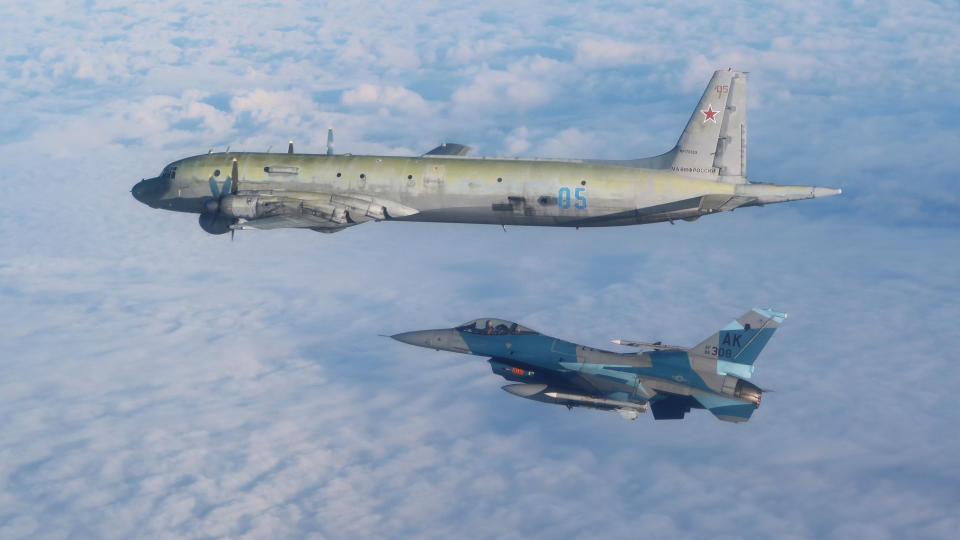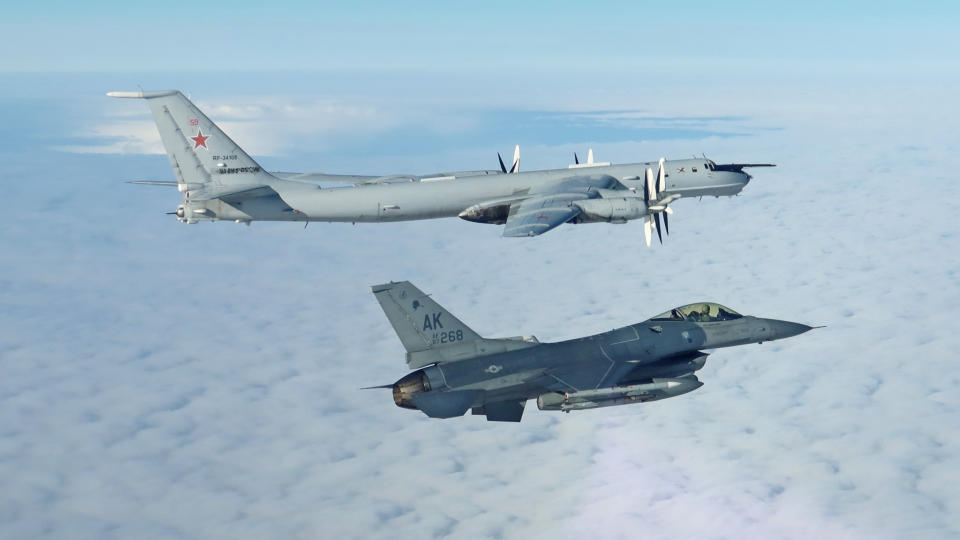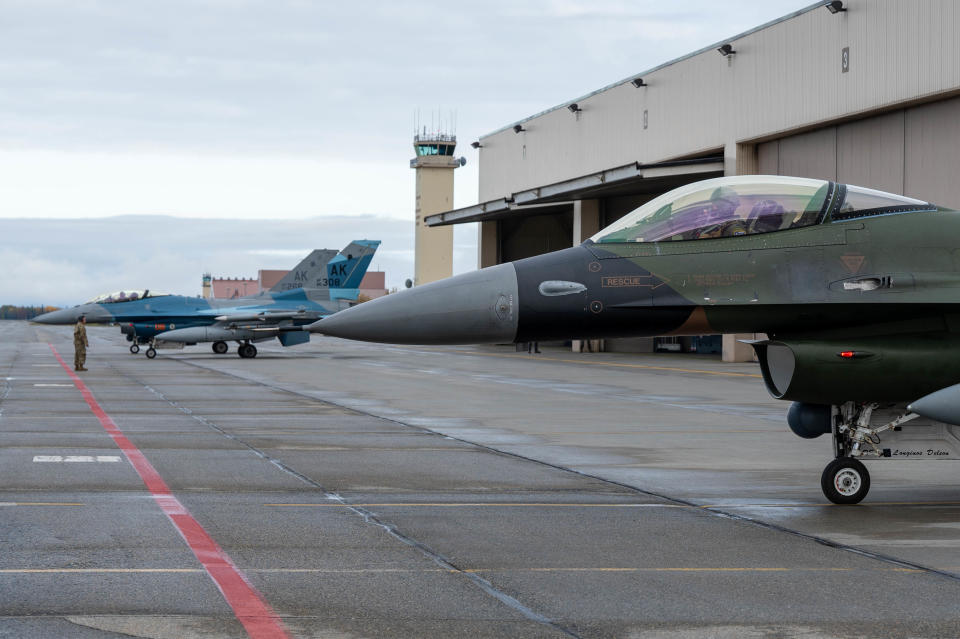North American Aerospace Defense Command (NORAD) has posted a video of an 18th Fighter Interceptor Squadron (18th FIS) F-16C executing an intercept on a pair of Russian Tu-95MS Bear-Hs and their fighter escorts off Alaska. The video in question shows a Su-35S Flanker executing a very close-range ‘headbutting’ maneuver, cutting in front of and across the Viper’s path. It’s the most dramatic video we have seen of such a close encounter since a B-52 crew experienced a similar incident over the Black Sea a few years ago.
The video posted by NORAD, taken by a 360-degree action cam placed in the F-16’s cockpit, shows how alarmed the Viper pilot was with the Su-35’s maneuver:
“On Sept 23, 2024, NORAD aircraft flew a safe and disciplined intercept of Russian Military Aircraft in the Alaska ADIZ. The conduct of one Russian Su-35 was unsafe, unprofessional, and endangered all – not what you’d see in a professional air force.” – Gen. Gregory Guillot pic.twitter.com/gXZj3Ndkag
— North American Aerospace Defense Command (@NORADCommand) September 30, 2024
The original press release from September 23 about the intercept noted four Russian aircraft were involved:
“The North American Aerospace Defense Command (NORAD) detected and tracked four Russian military aircraft operating in the Alaska Air Defense Identification Zone (ADIZ) on September 23, 2024.
The Russian aircraft remained in international airspace and did not enter American or Canadian sovereign airspace. This Russian activity in the Alaska ADIZ occurs regularly and is not seen as a threat.
An ADIZ begins where sovereign airspace ends and is a defined stretch of international airspace that requires the ready identification of all aircraft in the interest of national security.
NORAD employs a layered defense network of satellites, ground-based and airborne radars and fighter aircraft to track aircraft and inform appropriate actions. NORAD remains ready to employ a number of response options in defense of North America.”
Unprofessional & dangerous conduct by a VKS Su-35S (B/N “24” Blue / RF-95493) assigned to the 22nd Guards Fighter Aviation Regiment (based at Tsentralnaya Uglovaya, Primorsky Krai). https://t.co/BZDMIY3X1S
— Guy Plopsky (@GuyPlopsky) September 30, 2024
It’s worth noting that the 18th Fighter Interceptor Squadron is unique in the U.S. Air Force. As we previously reported, the unit was previously designated the 18th Aggressor Squadron (18th AGRS) but was redesigned the 18th FIS earlier this year. This occurred after performing the alert air sovereignty mission to backfill F-22 Raptors based out of Elmendorf Air Force Base in Anchorage for some time.
The growing demand for F-22 taskings around the globe resulted in the aggressors based to the north at Eielson AFB increasingly standing in for the Raptors in an alert augmentation role. This led to some very interesting situations where F-16s wearing Russian-like camouflage would be intercepting real Russian aircraft, usually over the Bering Sea. While some of the unit’s F-16s now wear a standard scheme, others do not and still partake in the alert missions. As it sits now, the 18th FIS performs both aggressor missions and alert taskings on a regular basis, making it unlike any other unit in the force.





As for the ‘headbutt’ maneuver, as we have reported on for many years, while deemed unprofessional at very close ranges, these types of antics have gone on for decades, being wholly commonplace during the depths of the Cold War. They have taken on new meaning and become more prolific in recent years as the global security situation shifted for the worse, with Russia and the United States, as well as many of its allies, being directly opposed to one another over the war in Ukraine. China is also notorious for executing similar stunts that have also included actually dumping radar-reflecting chaff into the path of the targeted aircraft, which raises major safety concerns. That being said, the USAF uses the ‘headbutt’ maneuver to gain the attention of wayward aircraft as well, but not in such an aggressive manner.
As for Russia’s activity near Alaska, it has spiked in recent months alongside that of China, which is now extending its power-projection capabilities in the air and at sea, with Alaska being a major focus. This included the first flight of Chinese H-6 cruise missile carriers off Alaskan shores and an increased Russian-Chinese naval presence in the area. This has prompted the U.S. Defense Department to allocate more resources to the highly strategic area, including sending naval assets there to keep a close eye on and deter Russian and Chinese air and naval operations, which are spiking as of late.
With the Arctic being of increasingly great importance, tensions between Russia and the United States climbing, and China becoming more comfortable with long-range military operations, the 18th FIS and their F-22s partners are likely to be busier than ever in the coming months and years.
Contact the author: [email protected]
Source Agencies

